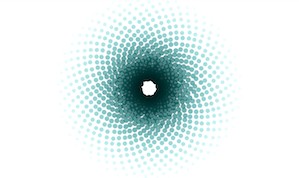
Providing effective feedback on resource consumption in the home is a key challenge of environmental conservation efforts. One promising approach for providing feedback about residential energy consumption is the use of ambient and artistic visualizations. Pervasive computing technologies enable the integration of such feedback into the home in the form of distributed point-of-consumption feedback devices to support decision-making in everyday activities. However, introducing these devices into the home requires sensitivity to the domestic context.
MSc alumnus Johnny Rodgers built and studied abstract visualizations as alternative feedback for energy use. This project describes four design requirements that this type of device must meet to be effective: pragmatic, aesthetic, ambient, and ecological, in which we explore the viability of using ambient and artistic feedback in the home. Our findings suggest that this approach is a viable way to provide resource use feedback and that both the aesthetics of the representation and the context of use are important elements that must be considered in this design space.
